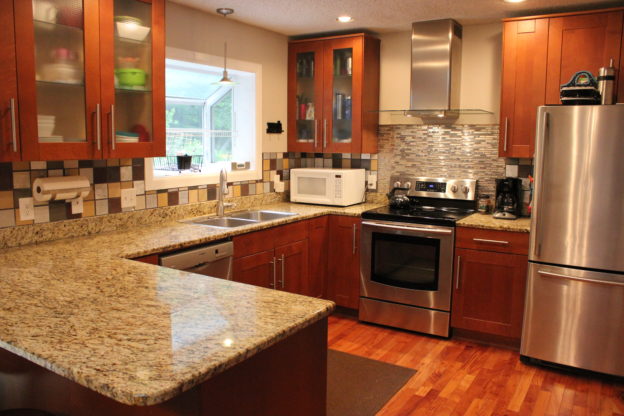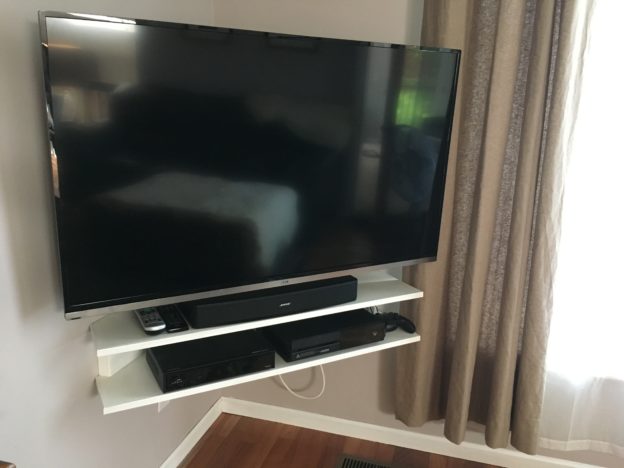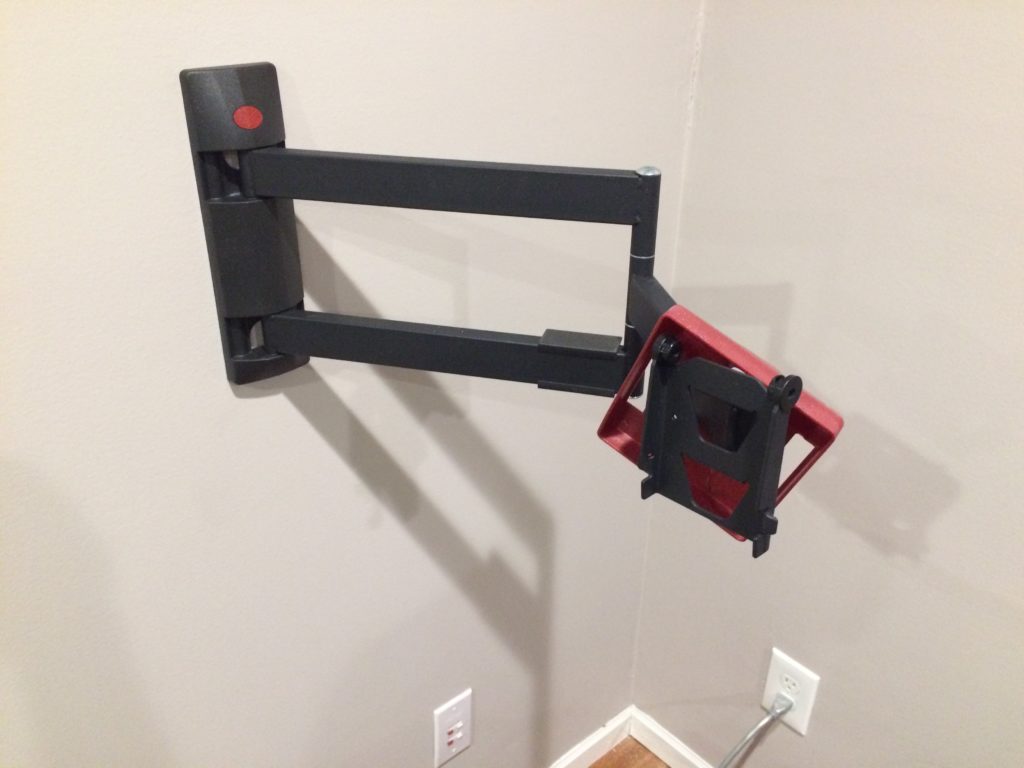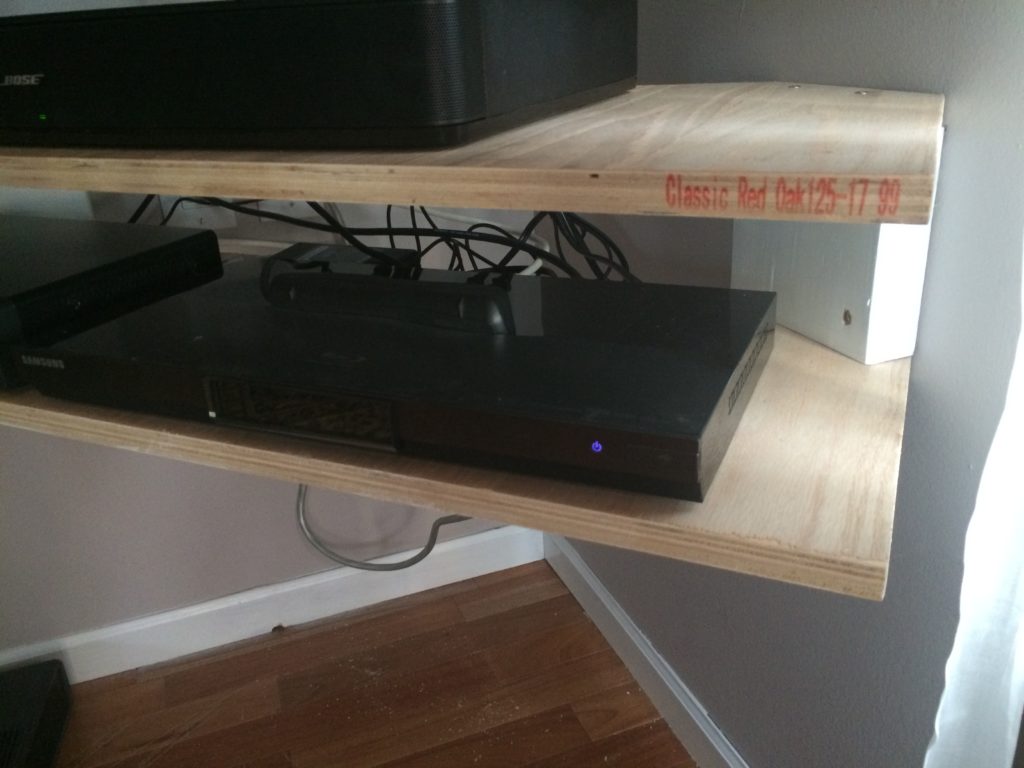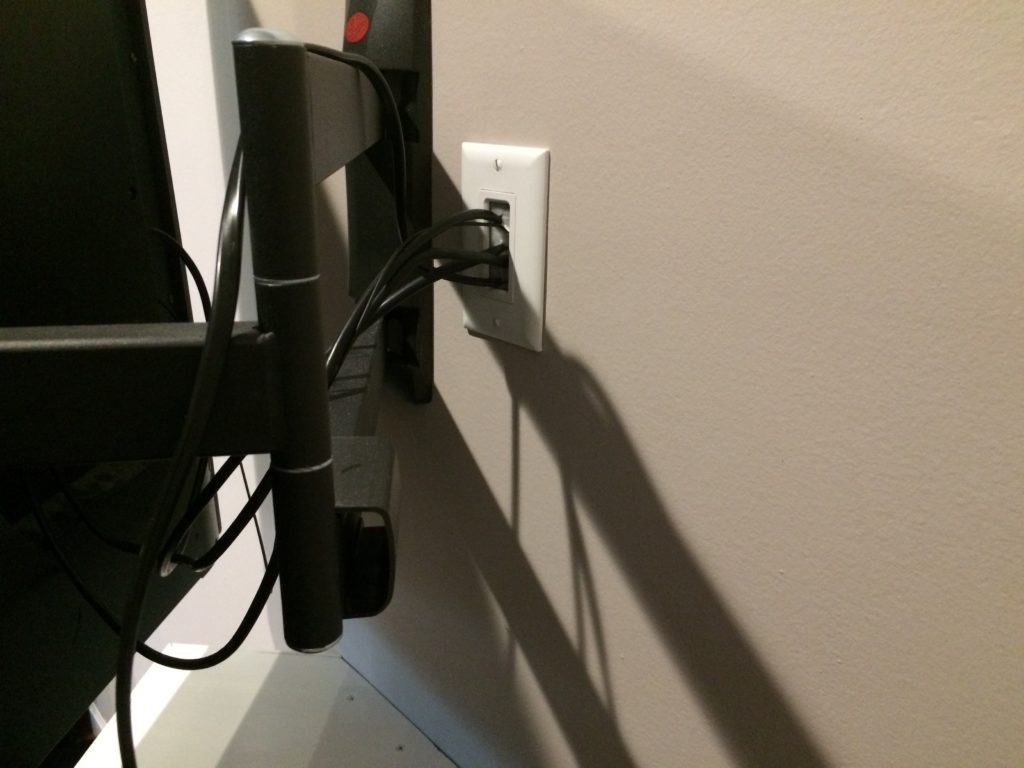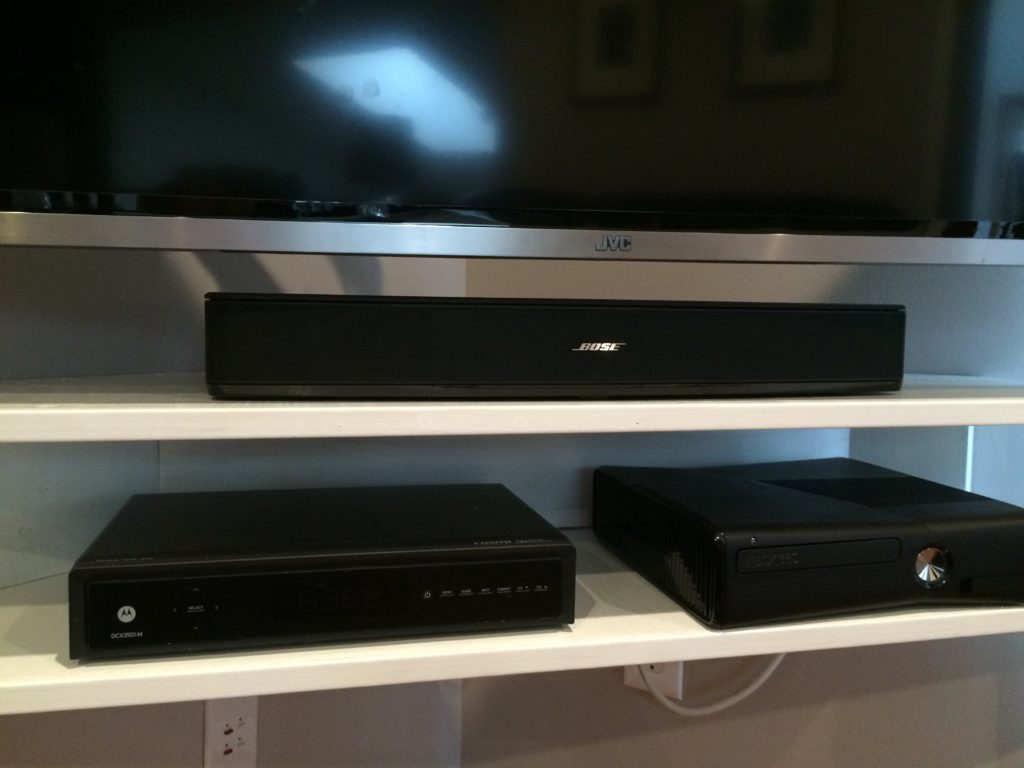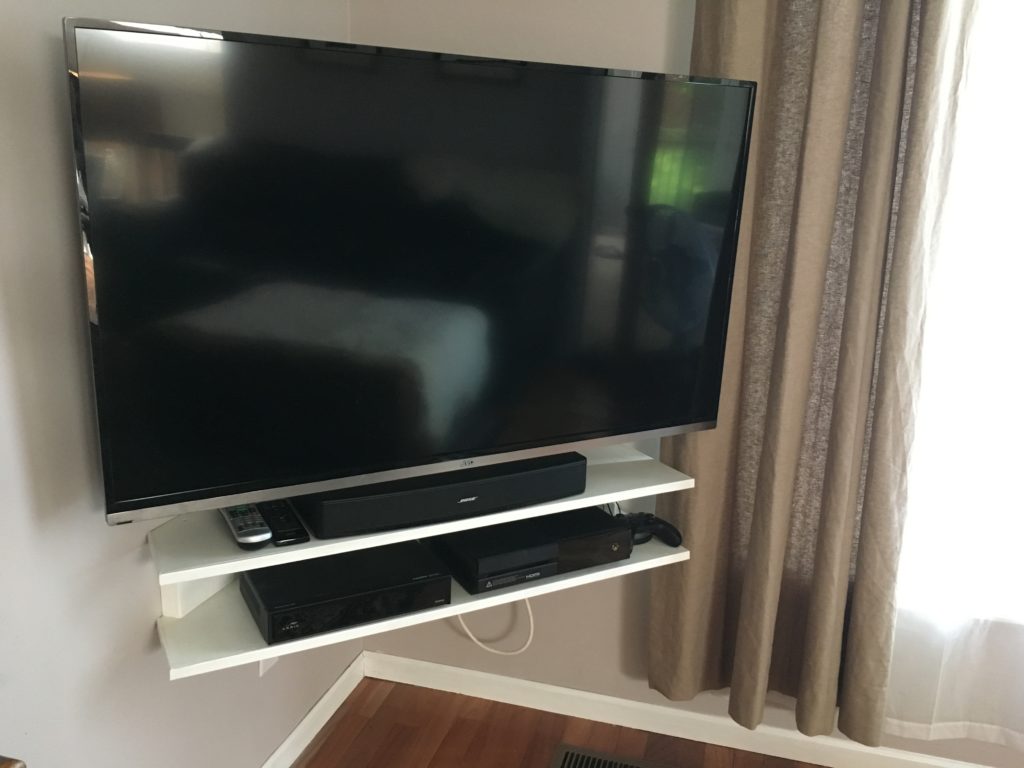What do we do?
The kitchen in our house does not have a built-in microwave above the stove or mounted under cabinets like many modern kitchens. Instead, we are left sacrificing some of our precious counter space with a huge appliance.
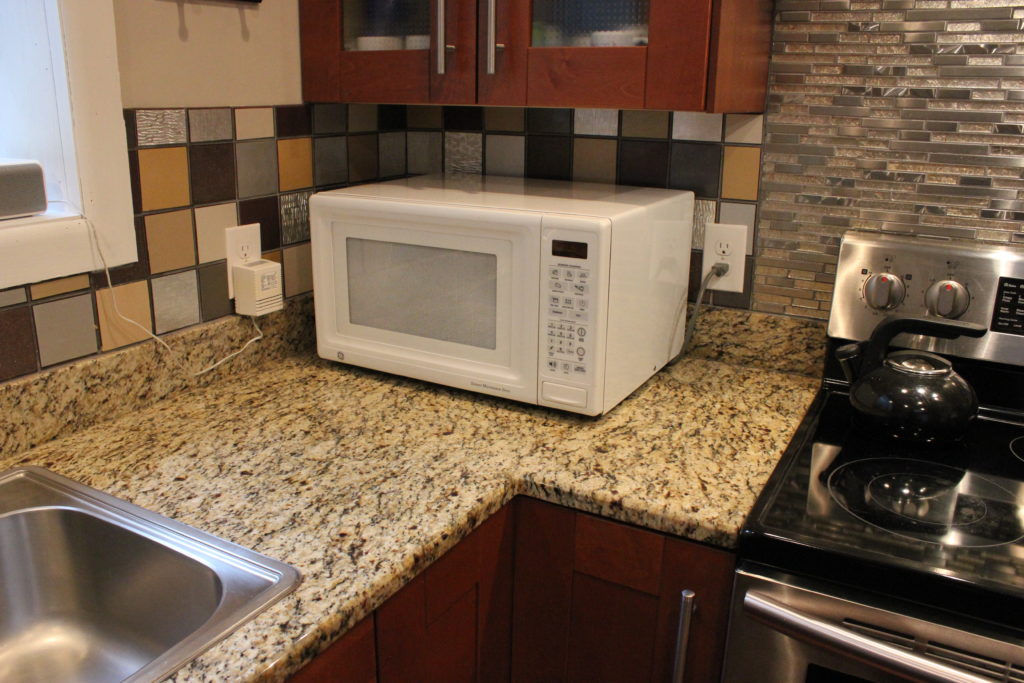
For a time, the microwave sat on a microwave cart in the adjacent dining room, but we ditched the cart when we built our banquette.
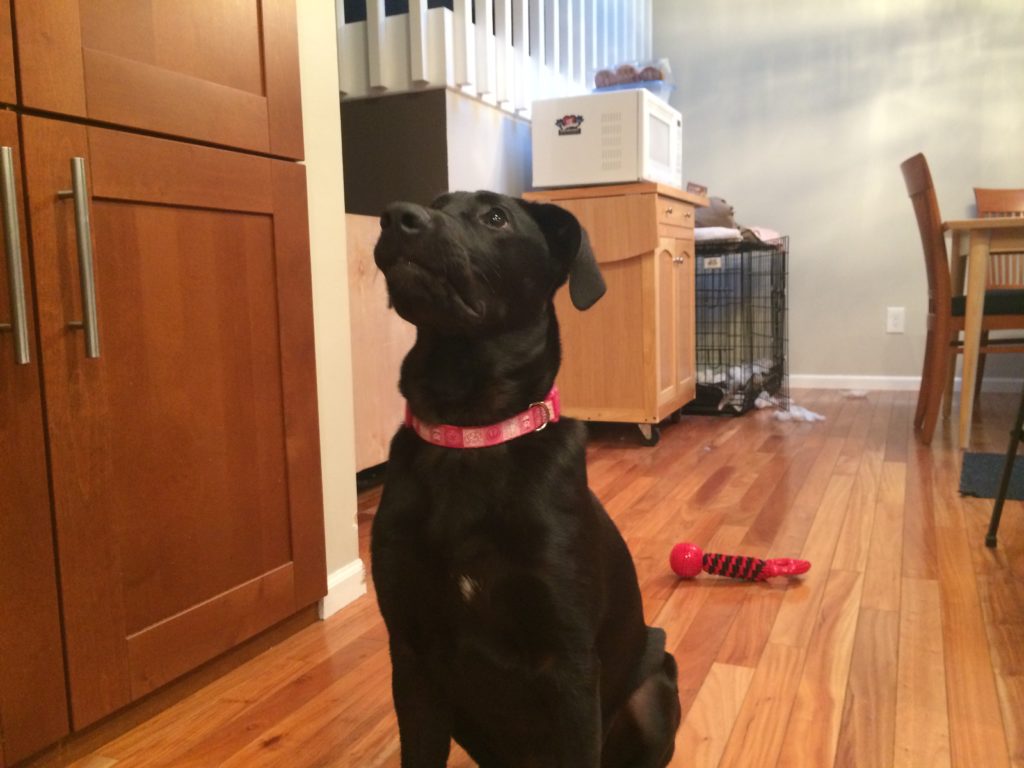
Once again, thankful we take so many pictures of Winnie, because we always end up finding a “before” photo of stuff!
We have considered replacing the decorative stove vent/light with an overhead microwave, but we like how “open” it makes that part of the kitchen feel.
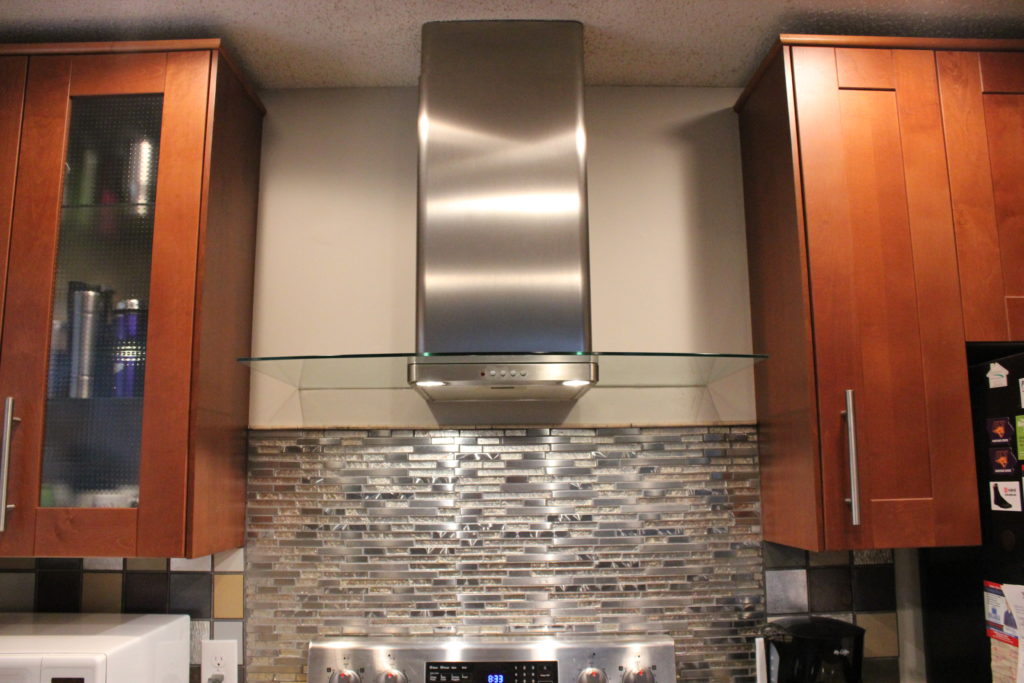
We also thought about making a hole in this wall for a pocket shelf that would hold the microwave, but the front entry bench is on the other side of the wall.
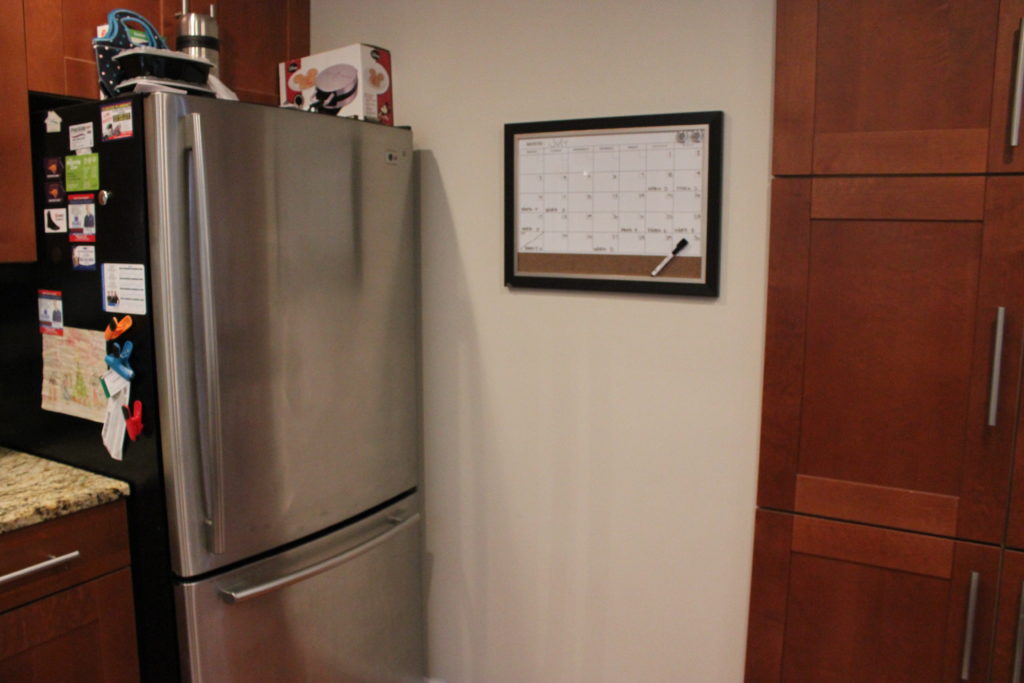
One other option we are considering is removing the cabinet to the immediate left of the refrigerator, and replacing it with open-air shelves, then mounting a microwave beneath the shelves.
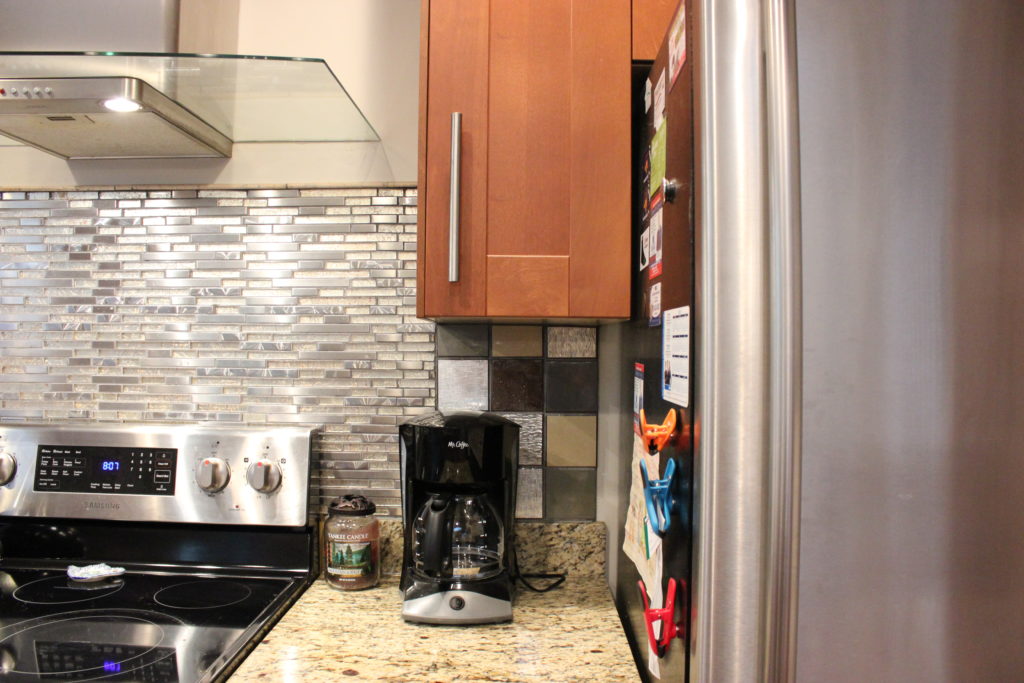
Any feedback or recommendations?
